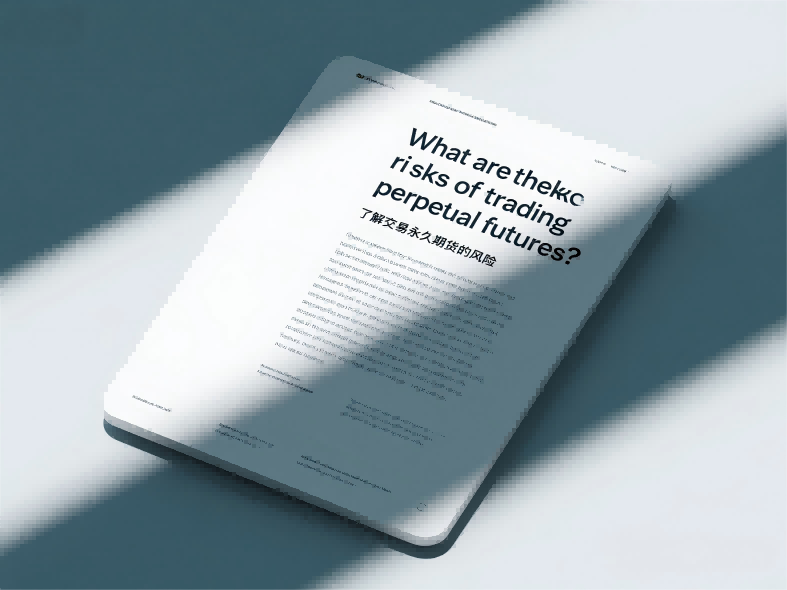Perpetual futures have become a hot topic in the world of modern trading. From crypto enthusiasts to Forex veterans, more traders are drawn to the nonstop action of perpetual contracts. With the rise of decentralized platforms, 24/7 markets, and tokenized assets, the opportunities look endless. But before jumping in, it’s important to ask: what are the real risks behind trading perpetual futures? Let’s break it down in a way that makes sense — and doesn’t just read like a user manual.

Perpetual futures are unique in one key way — they don’t expire. That means you can hold a position indefinitely, as long as your margin can handle it. Sounds flexible, right? It is, but it also introduces risks you don’t see in traditional markets.
Leverage is one of the biggest appeals — and biggest dangers. Many platforms offer 10x, 50x, or even 100x leverage. While that can turn small price moves into massive gains, it also means your position can be liquidated in the blink of an eye if the market turns against you.
Case in point: During a recent high-volatility event, over $1 billion worth of crypto futures positions were liquidated in a single day. For traders without tight risk management, that can mean a total loss.
Trading perpetuals isn’t just about predicting price direction — it’s about managing your margin. Unlike spot trading, your position is constantly at risk of being liquidated if your equity drops below the maintenance margin.
Combine that with the crypto market’s notorious volatility, and you’ve got a recipe for fast-moving swings that can wipe out gains — or entire portfolios — faster than traditional asset classes like stocks or forex.
Even seasoned traders can fall into the trap of overexposure, thinking they can ride out a dip. But perpetual futures don’t forgive emotion. They're built for discipline.
Platforms offering decentralized perpetual trading (like dYdX, GMX, or PFD) are reshaping what trading looks like. You can trade directly from your wallet, with full custody over your funds and no sign-ups needed.
That’s the good news. The challenge? No centralized customer support, no instant fund recovery if you mess up a transaction, and smart contract risks still exist. Even though audits and bug bounties help, there’s always a risk when code manages your money.
That said, decentralized perpetual platforms are growing fast — driven by lower fees, better transparency, and 24/7 uptime. Traders who understand the tech and respect the risks are finding new freedom here.
With perpetuals now available on crypto, forex, indices, commodities, stocks, and even options, diversification is easier than ever. But don’t confuse access with safety.
Each asset class comes with its own risks:
Smart traders use cross-asset exposure to hedge — not to overextend.
Perpetual trading today isn’t just about watching charts. It’s about using AI-driven analytics, real-time charting tools, and on-chain order flow to make better decisions.
Platforms that integrate these features offer traders a serious edge — especially when markets move fast. Auto-deleveraging systems, isolated margin options, and transparent funding rate mechanics are features worth looking for.
Want to thrive? Build a trading plan that includes clear stop-losses, defined leverage caps, and portfolio-wide risk limits.
The future of perpetual futures is leaning toward automation. We’re seeing smarter trading bots, AI-based signal detection, and smart contracts managing orders with minimal human error.
But with innovation comes risk. The more complex the tools, the more critical it becomes to understand them. A single mistake in contract settings or trusting the wrong protocol can still cost dearly.
Still, the direction is clear: smarter, faster, more transparent markets — built for the next generation of digital traders.
"Perpetual contracts never sleep — and neither does your risk. Master your strategy before the market masters you."
Perpetual futures aren’t just another trading product — they’re a fast-evolving part of the Web3 financial world. With the right mindset, tools, and respect for risk, they can open doors to a new level of trading freedom.
Whether you're deep in crypto, branching into forex, or exploring decentralized indices, perpetuals offer flexibility and access — but they demand strategy and control.
Always trade with a plan. Understand the tech behind your trades. And never let leverage write a check your portfolio can’t cash.
Want to dive deeper into perpetual trading with better tools and transparent protocols? Explore platforms built for the Web3 era — and stay one step ahead of the market.
Spot trading is straightforward: you buy an asset like Bitcoin, Tesla stock, or gold, and you profit if the price goes up
Read MoreTrading has always carried an air of possibility. The idea of turning a well-timed decision into a life-changing profit a
Read MoreStart your CFD trading
Your All in One Trading APP PFD